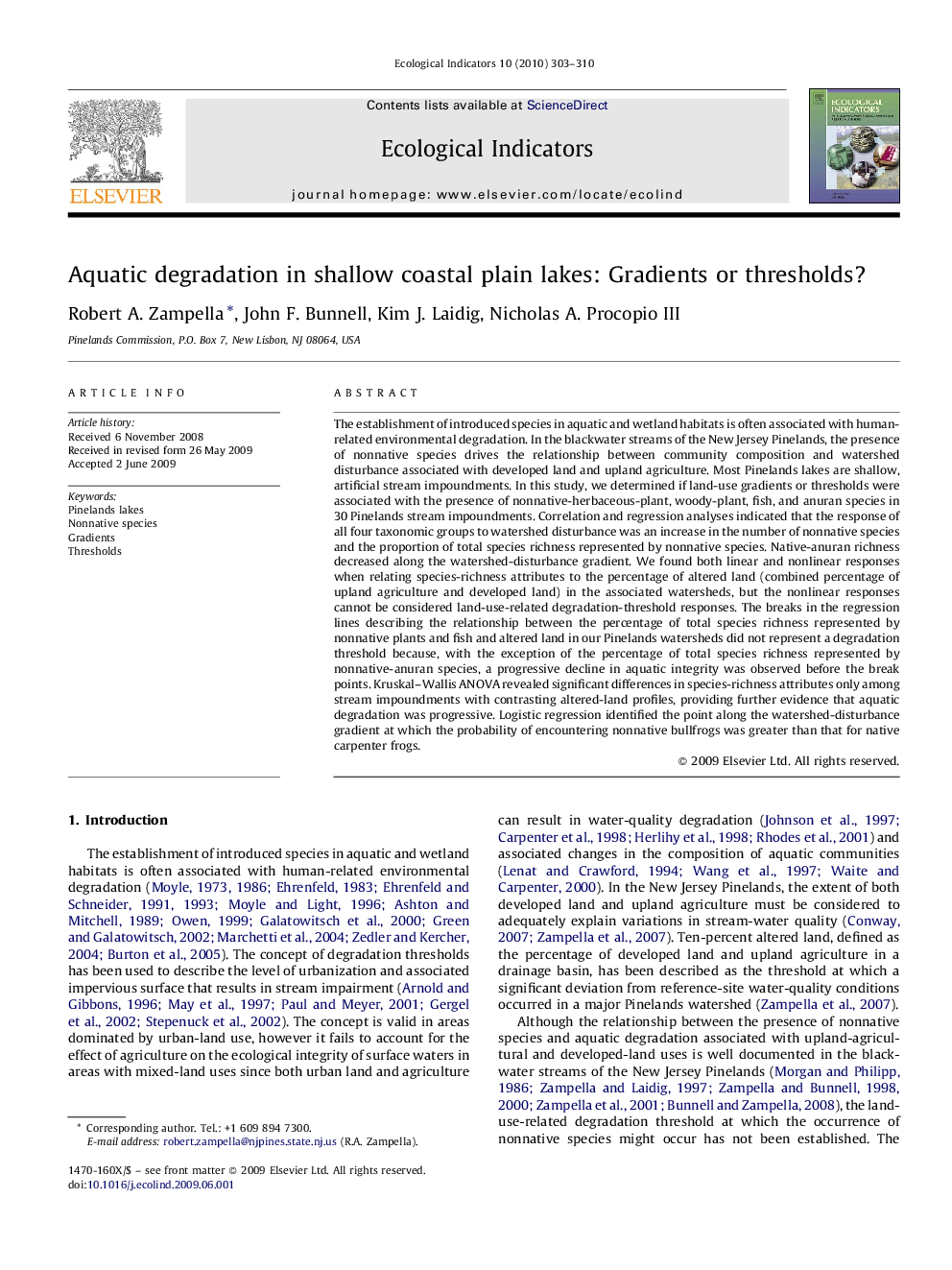| Article ID | Journal | Published Year | Pages | File Type |
|---|---|---|---|---|
| 4374286 | Ecological Indicators | 2010 | 8 Pages |
The establishment of introduced species in aquatic and wetland habitats is often associated with human-related environmental degradation. In the blackwater streams of the New Jersey Pinelands, the presence of nonnative species drives the relationship between community composition and watershed disturbance associated with developed land and upland agriculture. Most Pinelands lakes are shallow, artificial stream impoundments. In this study, we determined if land-use gradients or thresholds were associated with the presence of nonnative-herbaceous-plant, woody-plant, fish, and anuran species in 30 Pinelands stream impoundments. Correlation and regression analyses indicated that the response of all four taxonomic groups to watershed disturbance was an increase in the number of nonnative species and the proportion of total species richness represented by nonnative species. Native-anuran richness decreased along the watershed-disturbance gradient. We found both linear and nonlinear responses when relating species-richness attributes to the percentage of altered land (combined percentage of upland agriculture and developed land) in the associated watersheds, but the nonlinear responses cannot be considered land-use-related degradation-threshold responses. The breaks in the regression lines describing the relationship between the percentage of total species richness represented by nonnative plants and fish and altered land in our Pinelands watersheds did not represent a degradation threshold because, with the exception of the percentage of total species richness represented by nonnative-anuran species, a progressive decline in aquatic integrity was observed before the break points. Kruskal–Wallis ANOVA revealed significant differences in species-richness attributes only among stream impoundments with contrasting altered-land profiles, providing further evidence that aquatic degradation was progressive. Logistic regression identified the point along the watershed-disturbance gradient at which the probability of encountering nonnative bullfrogs was greater than that for native carpenter frogs.
